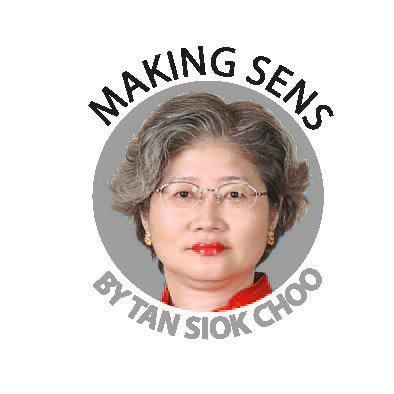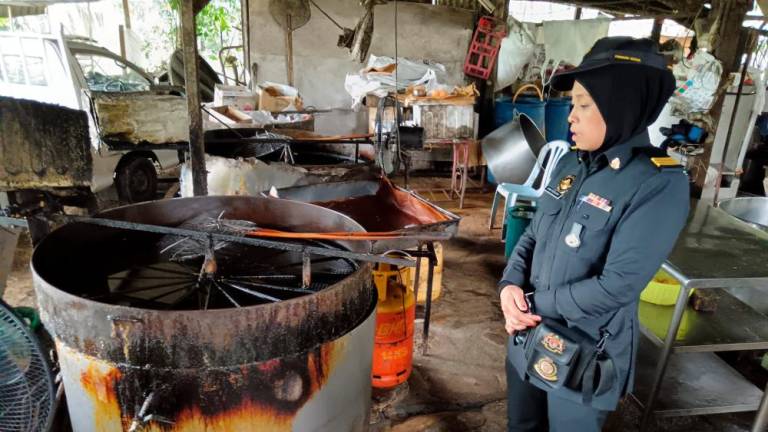FOR Malaysian policymakers, the travails now dogging financially-ailing Singapore Exchange-listed Hyflux Ltd offers pointers on what not to do.
First, should policymakers give priority to developing new investment alternatives or to ensuring individual investors are given easy-to-comprehend information to enable them to adequately assess the possibly higher risks involved?
Second, if these new investment alternatives cause widespread financial losses for thousands of individuals, should policymakers assume partial responsibility?
According to newspaper reports, some 34,000 individuals in Singapore could lose almost all of the S$900 million invested in Hyflux’s perpetual preference shares and perpetual bonds.
In May last year, Hyflux defaulted on payment of interest in its perpetual preference shares while a plan to inject new capital collapsed recently.
Perpetual preference shares are shares that offer a fixed rate of interest payment in perpetuity. Unlike ordinary shares, holders of perpetual preference shares don’t benefit if the issuer’s profits improve. Similarly, perpetual bonds also offer a predetermined amount of interest paid indefinitely.
Ironically, Hyflux’s saga began with two successes. In October 2010, it won a tender by the Public Utilities Board (PUB) to build Singapore’s largest desalination plant at Tuas.
Hyflux proposed supplying water at a first-year price of S$0.45 per cubic metre (pcm) – a price significantly lower than Keppel Seghers’ bid of S$0.67pcm and Sembcorp Utilities’ offer of S$1.42pcm.
On March 2011, Hyflux won another PUB tender to build a 411 megawatt power plant for the on-site desalination plant for S$890 million, Hyflux’s first venture into power generation. Hyflux’s plan to sell the excess power to the national grid unravelled when electricity prices in the republic collapsed.
To finance the desalination plant’s construction, on April 25, 2011, Hyflux issued S$400 million 6% perpetual preference shares, making it the first non-bank issuer in Singapore.
On Jan 23, 2014, Hyflux issued S$300 million 5.75% perpetual bonds while on July 29 the same year, Hyflux issued another S$175 million 4.8% perpetual bonds. Both bonds were for institutions and accredited investors only.
Investment products offering annual interest rates ranging from 4.8% to 6% were extremely attractive to yield-hungry individuals in Singapore. The 12-month fixed deposit rates from 2011 to 2016 ranged from 0.29% to 0.35%, data from the Monetary Authority of Singapore show.
Compounding the attractiveness of these perpetual securities was the ease of purchase – they could be bought through ATMs, online or mobile phones while Central Provident Fund members could use up to 35% of their investible savings to fund their investment.
Enhancing investors’ comfort level was the heart-warming life story of Hyflux founder and chief executive officer Olivia Lum and the multiple accolades the 58-year-old received.
Abandoned by her parents in Kampar, Perak, Lum was adopted by a kind-hearted widow. A brilliant student, Olivia did part-time jobs to finance her schooling in Kampar and Singapore as well as her chemistry course at the National University of Singapore.
After graduation, Lum worked for Glaxo Pharmaceuticals before venturing on her own to sell water treatment equipment and subsequently starting Hyflux.
In addition to being a Nominated Member of Parliament, Lum was also the first woman to be given Ernst & Young’s World Entrepreneur of the Year award in 2011 while a US$240 million net worth enabled her inclusion in Forbes’ list of Asia’s top 50 businesswomen in 2012.
Additionally, she was lauded by Singapore’s Prime Minister Lee Hsien Loong when he opened Hyflux’s desalination plant in 2013.
Some individuals interviewed by journalists said they were persuaded to invest in Hyflux because they were informed Temasek Holdings, the Singapore government investment arm, was a shareholder.
In response, Temasek International said it sold its Hyflux shares before 2006 – well before the perpetual preference shares and perpetual bonds were issued in 2011 and 2016 respectively.
Did investors misinterpret the continuing presence of Gay Chee Cheong, a director of Heliconia Capital Management, Temasek’s independently-managed fund, who was also a director of Hyflux?
Also notable, these perpetual securities weren’t rated. Although a rating isn’t mandatory, an investment grade or junk rating offers an easy way to assess the issuer’s credit-worthiness.
Additionally, the Monetary Authority of Singapore (MAS) says all individuals were reminded to read the disclosure documents before making their decision to invest.
This prompts another question: Were the documents written in financial legalese or in easy-to-understand language?
In a May 2016 article, Motley Fool writer Chong Ser Jing raised concerns about Hyflux’s inability to generate cash flow and its weak balance sheet.
“Data from S&P Global Market Intelligence that showed Hyflux has been generating negative cash flow from operations in each year from 2010 to 2015. Meanwhile, the company currently has a net debt to equity ratio of 0.98 which isn’t low,” she wrote.
If so, the question why was Hyflux deemed an appropriate issuer of perpetual securities in May 2016 remains to be answered.
Opinions expressed in this article are the personal views of the writer and should not be attributed to any organisation she is connected with. She can be contacted at siokchoo@thesundaily.com












